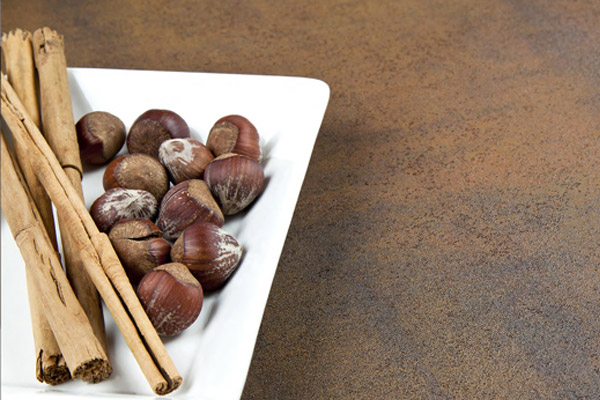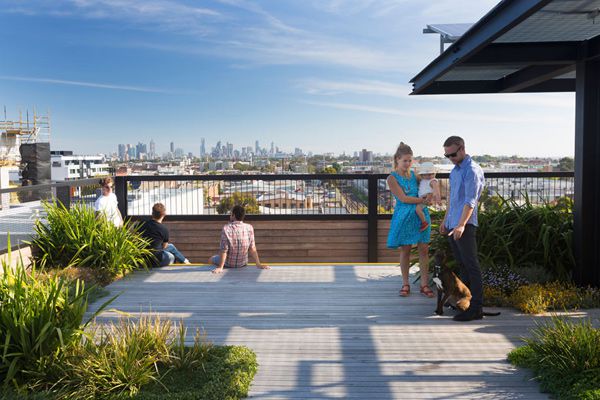The National University of Singapore and SUNTORY have joined forces to explore opportunities for soil-less vertical greening systems in a tropical context. Janice Seow reports.
November 7th, 2011
For several years now, the School of Design and Environment at NUS has been studying the Urban Heat Island (UHI) phenomenon on Singapore’s environment and exploring measures to minimise its impact.
This has resulted in a number of initiatives – supported by various government agencies – aimed at understanding the thermal benefits of urban greenery, including that of rooftop and vertical gardens.

Its latest collaboration is with Japanese company SUNTORY; both have just signed a Memorandum of Understanding (MOU) to collaborate on the research and development of unique technologies and expertise in the area of vertical greening systems.
Their investigations will centre on Pafcal, the first soil-less medium for plants developed by Suntory Midorie Limited – a greening business launched by SUNTORY in 2008.

Pafcal is a new urethane-based spongy gardening material that serves as a soil substitute for growing plants. The system “Hana no Kabe” with Pafcal is already in commercial use in Japan, and has begun small business-based employment in Shanghai, Hong Kong and Taiwan.

In Singapore, the studies will focus on the viability and performance of the system in a tropical context.
“Research issues will include thermal performance monitoring of the greenery system, water absorption and retention ability of Pafcal, chemical leaching of Pafcal, suitability and choice of plants for the system, and maintenance issues of the system,” says Professor Heng Chye Kiang, Dean at the School of Design and Environment, NUS.
“We have been working on vertical greenery for quite some time. This is yet another opportunity to study a new system within the context of our tropical climate.

“One of the main problems with vertical greenery is always one of maintenance and water consumption. If we have a system that is more water efficient, and delivery of nutrients and water as well as maintenance is simpler, I think we would probably make it more viable, [and encourage] more buy-in from the public and building owners.
“I think a lot of residential estates as well as commercial projects have now implemented rooftop greenery as well as vertical greenery. Not to mention the efforts by pioneering agencies like HDB [Housing Development Board]. So I think we will just see more and more of these buildings, whether it’s commercial or residential, going green,” says Professor Heng.

The green wall system with Pafcal is set up at NUS at the Greenery Technology Laboratory (GTL) of the Department of Building, School of Design and Environment.
INDESIGN is on instagram
Follow @indesignlive
A searchable and comprehensive guide for specifying leading products and their suppliers
Keep up to date with the latest and greatest from our industry BFF's!
The new range features slabs with warm, earthy palettes that lend a sense of organic luxury to every space.

London-based design duo Raw Edges have joined forces with Established & Sons and Tongue & Groove to introduce Wall to Wall – a hand-stained, “living collection” that transforms parquet flooring into a canvas of colour, pattern, and possibility.

Cut out the clutter and discover the smarter way to specify. The Collection by Indesign is the industry’s gateway to the best design products all in one simple, sophisticated platform.

Neolith is a high performance, large format, slim porcelain slab, with superior physical and mechanical properties that meet and exceed every industry specification or standard.

Increasingly, nature and greenery will play an important role in building our future cities as we grapple with rising urban density while addressing issues of health, wellbeing and sustainability. Linsey Rendell explores living infrastructure locally.

Coming back for its third year, Melbourne Design Week 2020 is set to be bigger and better than ever. Engage with the most brilliant minds across diverse industry sectors and immerse yourself in an incredible experience of meaningful design thinking.
The internet never sleeps! Here's the stuff you might have missed

Tickets for Architecture & Design’s 2025 Sustainability Summit are on sale. This 19 November, engage in ten expert-led panels on urban planning, AI, and circular economy. Join industry leaders in Sydney or online, and gain CPD-accredited insights to drive innovative, sustainable building solutions shaping our shared future. Plus on demand access to recordings.

London-based design duo Raw Edges have joined forces with Established & Sons and Tongue & Groove to introduce Wall to Wall – a hand-stained, “living collection” that transforms parquet flooring into a canvas of colour, pattern, and possibility.